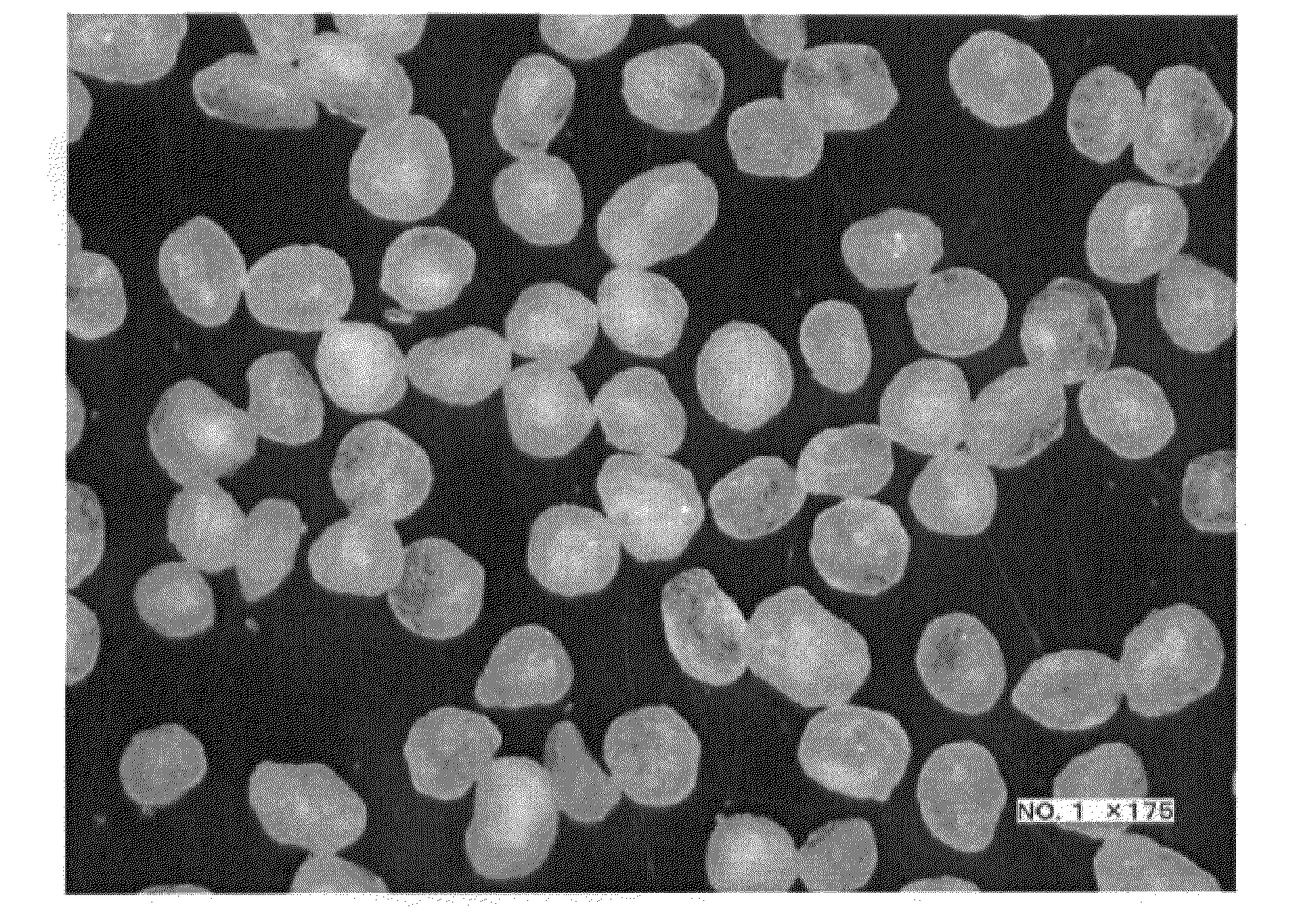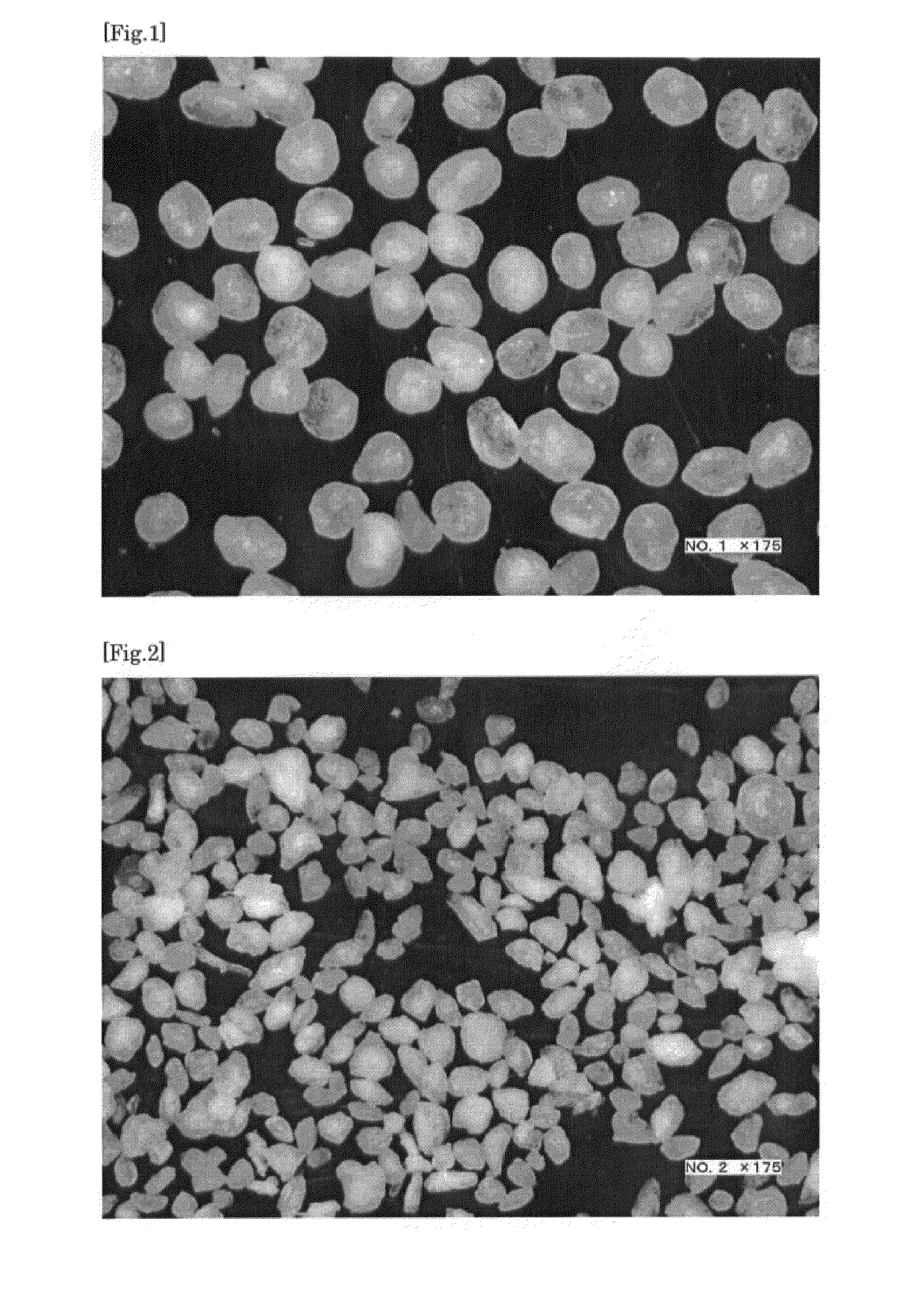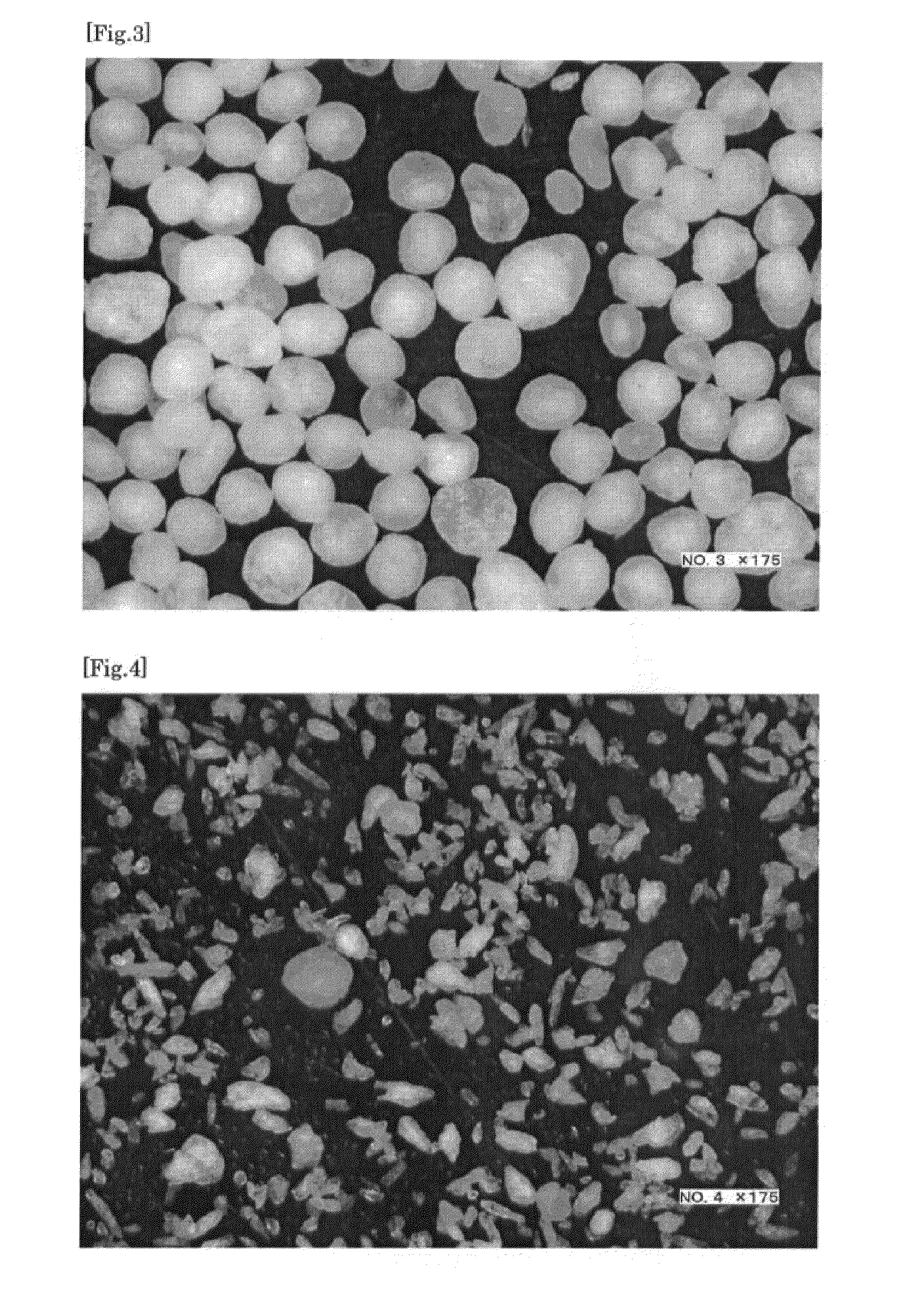Process for production of spherical microparticles comprising tamsulosin hydrochloride
a technology of tamsulosin hydrochloride and microparticles, which is applied in the direction of biocide, animal repellents, drug compositions, etc., can solve the problems of difficult application of such particles to orally disintegrating tablets, difficult to obtain granules that pass through 60 meshes, and inability to provide coatings, etc., to achieve good content uniformity, good content uniformity, and small particle size distribution
- Summary
- Abstract
- Description
- Claims
- Application Information
AI Technical Summary
Benefits of technology
Problems solved by technology
Method used
Image
Examples
example 1
[0105]980 g of microcrystalline cellulose (“Ceolus (registered trademark) PH-101”, manufactured by Asahi Kasei Chemicals Corporation), 20 g of tamsulosin hydrochloride, and 815 g of water were introduced into a high-speed stirring granulator (trade name “vertical granulator VG-25”, manufactured by Powrex Corporation) and stirred at a peripheral speed of 2.1 m / s (the number of revolutions of the agitator: 100 rpm) for 8 minutes and then at a peripheral speed of 6.3 m / s (the number of revolutions of the agitator: 300 rpm) for 15 minutes.
[0106]Thereafter, the resulting granules were dried with a fluid-bed granulator / dryer at 70° C. for 1 hour, thereby giving spherical fine particles. Table 1 and FIG. 8 show the results collected after classifying into groups by sieving the resulting spherical fine particles and determining the weight ratio (%) of the fine particles of each group relative to the total particle weight.
TABLE 1Particle diameter (μm)Weight %greater than 5004.2250 to less th...
example 2
[0108]Of the spherical fine particles obtained in Example 1, a sustained-release coating was applied to spherical fine particles having a particle size of 106 to less than 150 μm, thereby giving sustained-release coated fine particles. Coating was performed with a fluid-bed granulator using a 85:15 (in weight ratio) mixture of ethylcellulose and hypromellose dissolved in a concentration of 4 wt % in a 80:20 (in weight ratio) mixed solution of ethanol and water. The resulting coated fine particles entirely passed through a #83 (180 μm) sieve.
[0109]These sustained-release coated fine particles were subjected to a fluid-bed coating with a 3:1:1:5 (in weight ratio) mixture of methacrylic acid copolymer LD, an ethyl acrylate-methyl methacrylate copolymer dispersion, an aqueous ethylcellulose dispersion, and water and then dried, thereby giving sustained-release enteric coated fine particles. The resulting coated fine particles entirely passed through a #60 (250 μm) sieve and it was thus ...
example 3
[0110]135 parts by weight of the sustained-release enteric coated fine particle obtained in Example 2, 889 parts by weight of D-mannitol, and 125 parts by weight of low-substituted hydroxypropylcellulose were subjected to fluid-bed granulation while intermittently spraying 6 parts by weight of a 2 wt % aqueous hydroxypropylcellulose solution and subjected to a #22 (710 μm) sieve. 30 parts by weight of magnesium aluminometasilicate powder (“Neusilin (registered trademark) UFL2”, manufactured by Fuji Chemical Industry Co., Ltd.) and 15 parts by weight of calcium stearate were added to and mixed with the granules that had passed through the sieve, thereby giving powder for tablet pressing. Pressing was performed at a pressure of 6860 N with a rotary press (manufactured by Kikusui Seisakusho Ltd.), giving orally disintegrating tablets having a diameter of 8.5 mm.
PUM
| Property | Measurement | Unit |
|---|---|---|
| speed | aaaaa | aaaaa |
| speed | aaaaa | aaaaa |
| particle diameter | aaaaa | aaaaa |
Abstract
Description
Claims
Application Information
 Login to View More
Login to View More - R&D
- Intellectual Property
- Life Sciences
- Materials
- Tech Scout
- Unparalleled Data Quality
- Higher Quality Content
- 60% Fewer Hallucinations
Browse by: Latest US Patents, China's latest patents, Technical Efficacy Thesaurus, Application Domain, Technology Topic, Popular Technical Reports.
© 2025 PatSnap. All rights reserved.Legal|Privacy policy|Modern Slavery Act Transparency Statement|Sitemap|About US| Contact US: help@patsnap.com



